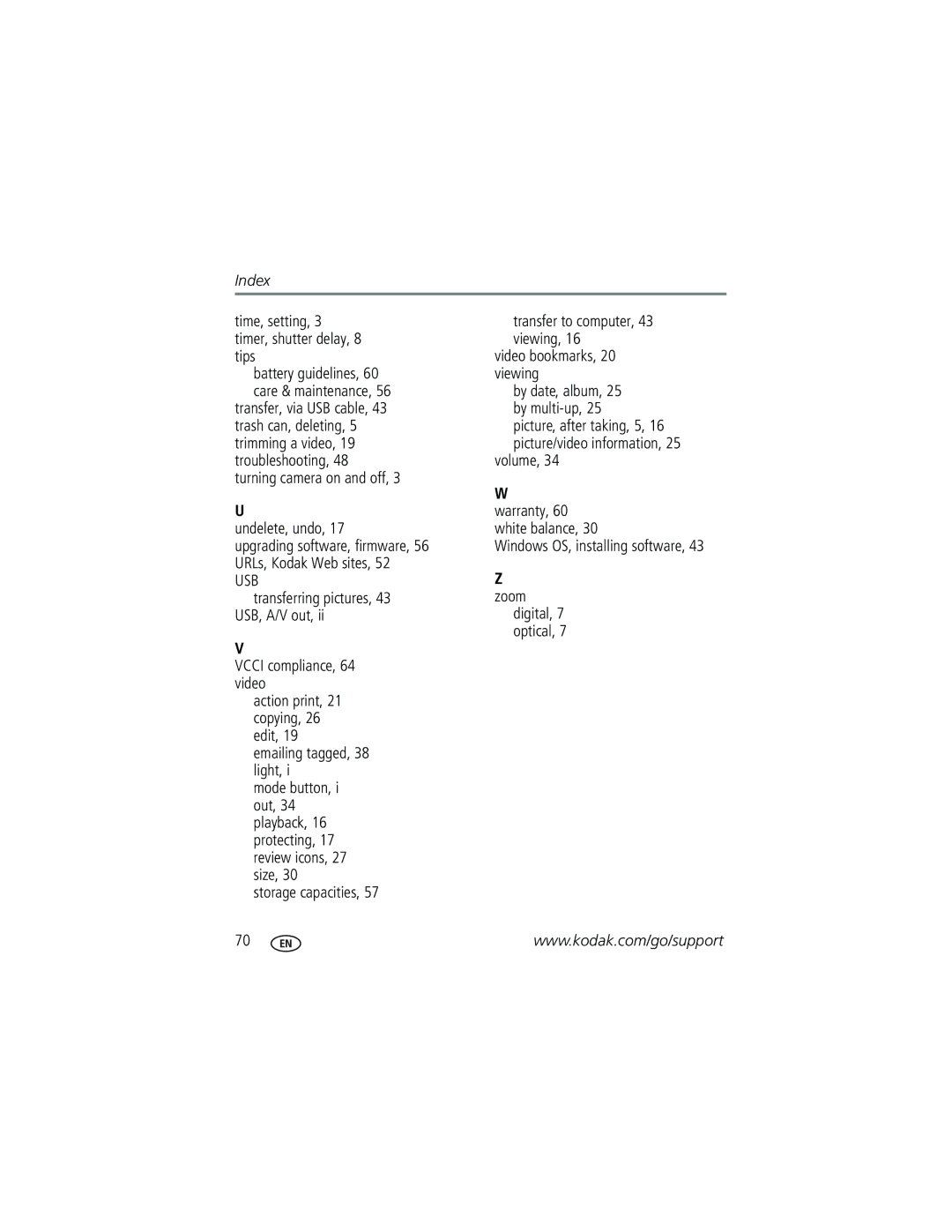EasyShare specifications
The Kodak EasyShare line of digital cameras was created to simplify photography and make it more accessible to consumers. Launched in the early 2000s, the EasyShare series quickly became known for its user-friendly design, allowing novice photographers to capture high-quality images without the complexities often associated with digital cameras.One of the standout features of Kodak EasyShare cameras was the innovative One Touch sharing button. This feature allowed users to easily upload their photos to a computer or share them via email with a single press. The integration of EasyShare software provided a seamless way to organize, edit, and print photos, enhancing the overall user experience.
Kodak's commitment to ease of use was reflected in the cameras' intuitive interface, with straightforward menus and controls suitable for users of all ages. The cameras typically featured a variety of automatic shooting modes, ensuring optimal settings for different environments and subjects. This automatic functionality often included scene modes such as portrait, landscape, and night, allowing photographers to capture stunning images with minimal effort.
In terms of image quality, Kodak EasyShare cameras featured CCD sensors with resolutions that ranged from 3 to well over 12 megapixels, depending on the model. Many of these cameras included optical zoom capabilities, which enabled users to get closer to their subjects without sacrificing image quality. The optical zoom lenses were designed to deliver clear, sharp images in various lighting conditions.
Additionally, Kodak incorporated technology that increased the accessibility of their cameras. Many EasyShare models came equipped with built-in flashes, image stabilization features, and large LCD screens for easy viewing and framing of shots. Some models also offered video recording capabilities, allowing users to capture moments not just in still images but also in motion.
Another key characteristic of the Kodak EasyShare series was its versatility. With options ranging from compact point-and-shoot cameras to more advanced models, the EasyShare range catered to a wide spectrum of users. The ability to connect easily to printers, either through USB or wireless connections, further showcased Kodak's dedication to making photography a hassle-free experience.
As digital photography evolved, the EasyShare line adapted to include features like Wi-Fi connectivity and the ability to share images directly to social media platforms. While the Kodak EasyShare brand has seen a decline in popularity due to the rise of smartphones and advanced digital cameras, its legacy of simplicity and accessibility has left a lasting impact on consumer photography.

